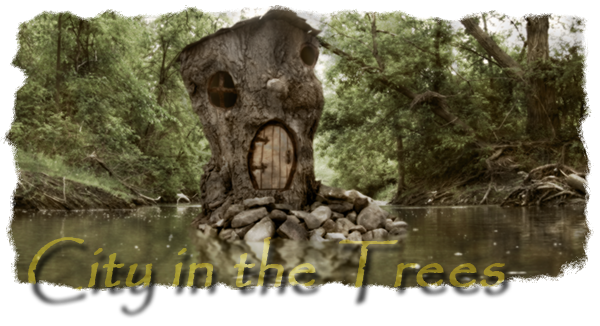It's been a long, long time since I've mentioned James Salmon on the blog. So if you're just passing by, James V. Salmon was an amateur photographer in Toronto, whose personal work spans mainly the 1940s to the end of the 1950s, when his life was cut far, far too short by cancer. He was also a collector of vintage photographs and he left a wonderful legacy to the people of the GTA when his family donated his collection to the City of Toronto Archives and the Toronto Public Library. A large portion of his accession has been digitized and is available online. And what a wonderful legacy it is for anyone interested in the development of the suburbs.
When James Salmon started doing his work, essentially at the end of World War II, Toronto was taking a deep breath and preparing to burst its old bounds, and it's never really looked back. But thanks to him, we can look back. A couple of days ago I happened across a handful of photos of his I'd downloaded from either the Archives or the Library, so let me show you what I mean.
One bridge that clearly held James's (can I call you James, Mr. Salmon?) fascination was the Islington Avenue bridge over the West Humber at Thistletown.This was, obviously, a one-lane pony truss bridge. The first and second photos face north and the third faces south. Evidently the road was in the throes of its upgrade in the latter two shots; the current four-laner dates to (if I'm reading the side plaque in the street level view correctly) 1959. Since he died at the end of 1958, there's a good chance he was already ill when those two photos were taken, in what might have been the spring and summer of that year.
For a long time I was frustrated that he spent so much time photographing this particular bridge on Islington while completely ignoring the one further north where Finch Avenue used to end in a T-junction with Islington Avenue. He must have taken well over a dozen photos of this one bridge alone. But I've realized from aerial photos that the bridge that was there in his time, though it was itself subsequently replaced, was an already fairly modern and relatively uninteresting bridge, and the real prize was this long-last look at rural southern Ontario's once-ubiquitous pony trusses. I guess I can understand why he didn't waste the time or film.
Below are a pair of shots (top facing east, bottom facing west) of the bridge that once carried Sheppard Avenue across the West Don River between Bathurst Street and Yonge Street. Around 1960 this bridge was replaced by a real monster that spans the valley with scarcely a drop in elevation.
I've posted these two (below) before, but I think they bear repeating. These continue to astonish me; that up until about 1960, this was the bridge that carried Lawrence Avenue across the East Don River; one of the little one-lane pony trusses that used to be a dime-a-dozen around here... and everywhere else, too, I suppose. I can't show you this bridge, of course; it was removed a few years after James took these photos. Even then, at the time he took these, it looks like the bridge was closed to traffic. I believe this was one of the bridges compromised by Hurricane Hazel in 1954. Whether or not it was open to traffic subsequently I can't say; I do know it was removed when the the Don Valley Parkway was pushed through, literally just the other side of the trees in the upper photo, circa 1962. The current Lawrence Avenue bridge, about 100 yards to the north, carries six lanes of traffic today. I became aware of this site thanks to Dave Till's photos, which featured a photo of the support under the bridge at the near end in the upper photo. But without James Salmon, I wouldn't have seen what the bridge itself once looked like, or been given the ability to imagine driving across it on a summer day over a decade before I was born.
Not far away from that Lawrence Avenue bridge was this one; it carried Victoria Park Avenue over the railway tracks that ran south of Lawrence Avenue. In fact, at the time this photo was taken, James was standing literally at the end of Lawrence Avenue at the time... it was immediately behind him. I've seen some photos of this bridge and believe it was largely composed of wood. It's hard to imagine a wooden road bridge now, and this one looked pretty substantial. Clearly a two-laner. This bridge was replaced around 1960 with the current four-lane bridge.
The view below is Bayview Avenue looking north to Steeles Avenue. It probably goes without saying that the bow arch bridge seen here no longer exists; it was replaced in the 1960s. Bow arch bridges were reasonably common in southern Ontario, but nowhere near as common as pony trusses. Perhaps as a result of that a surprising number of them still exist and are still in use (a number of them appear in the video I posted here at the end of the summer of 2013). But they tend to persist where the traffic doesn't overtax them, and Bayview is no such road. The view is far busier today... and, oddly enough, more heavily treed as well.
The photo below is kind of a treat. It's what's left of a bridge that used to cross the Don River just north of the Bloor Viaduct (which you can see in the distance). This was once a pleasant drive, and two roads (whose names escape me at the moment) once met at this bridge. I have a few earlier photos of the bridge when it was a going concern but I like that James Salmon, like me, had an eye for what was as well as what is but soon might not be.
Finally, let's round it out with this one. James Salmon was fascinated, judging by the number of times he photographed it, with the Old Dundas Street bridge across the Humber River. Even though it was superseded by the existing bridge to the north, it remained open to traffic until it was effectively ruined by Hurricane Hazel. Not long afterward, it was removed. James's portfolio, as I recall, includes the bridge in all three phases: going concern, damaged, and, as you see below, gone. This photo looks south and was taken from the current Dundas Street bridge over the Humber.
Monday, January 05, 2015
Subscribe to:
Post Comments (Atom)













2 comments:
Wonderful as always. I can't decide if I'm sad or not that James never saw the transformed suburbs.
Hiya, Jim, thanks. :) I know he would have loved to have watched the city change; he has a lot of shots of suburbs in his neighbourhood north of Eglinton going up in the 50s. I think he just would have gone further afield in the 60s, like his friend Ted Chirnside did, out to Peel and up to York Counties. But he didn't get to.
Post a Comment